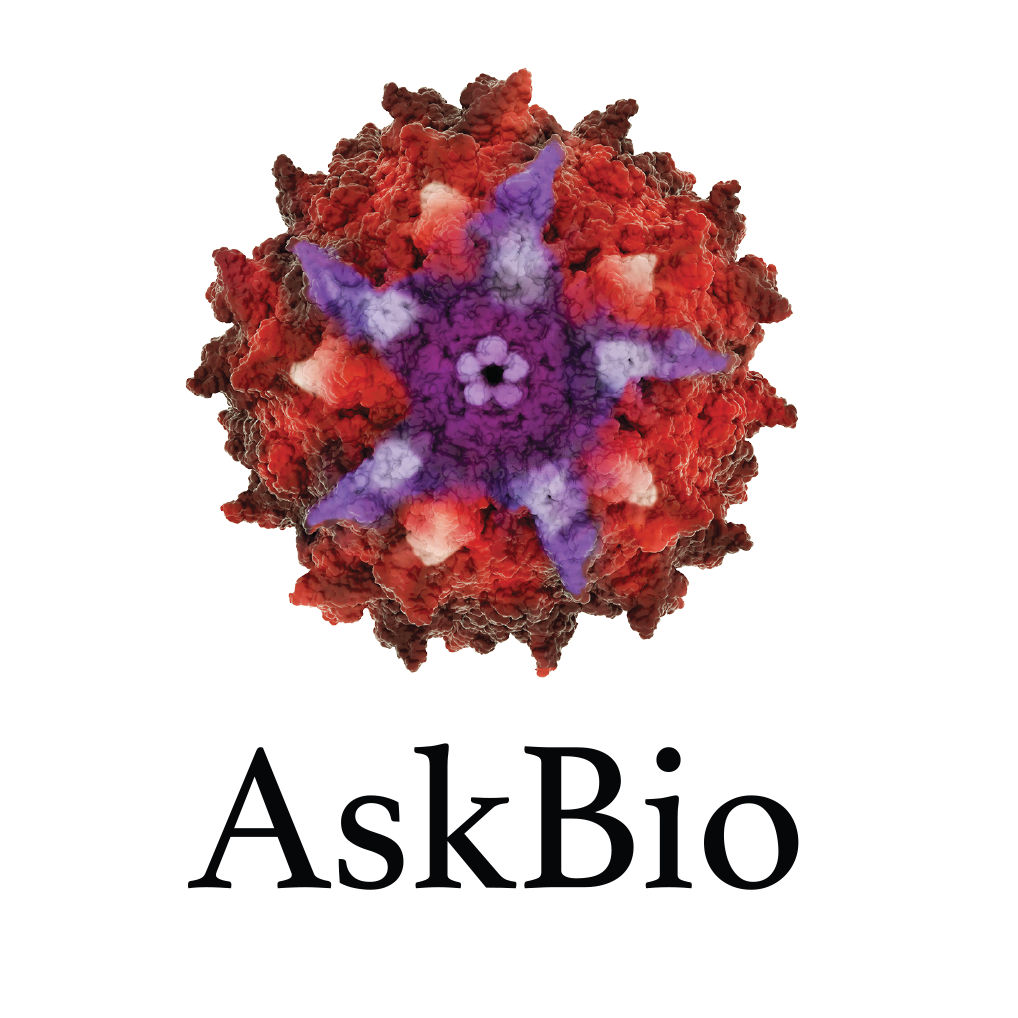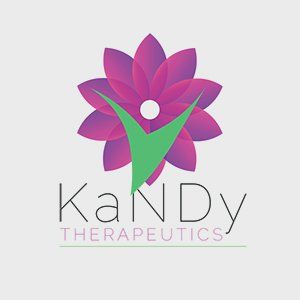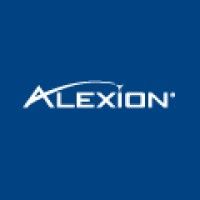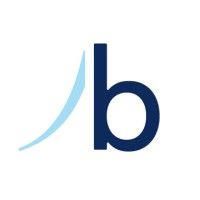预约演示
更新于:2025-12-17

Bayer AG
更新于:2025-12-17
概览
标签
肿瘤
心血管疾病
其他疾病
小分子化药
单克隆抗体
Fc融合蛋白
关联
268
项与 Bayer AG 相关的药物作用机制 EGFR C797S抑制剂 [+2] |
原研机构 |
在研适应症 |
非在研适应症- |
最高研发阶段批准上市 |
首次获批国家/地区 美国 |
首次获批日期2025-11-19 |
作用机制 NK1R 拮抗剂 [+1] |
非在研适应症 |
最高研发阶段批准上市 |
首次获批国家/地区 加拿大 |
首次获批日期2025-07-01 |
靶点 |
作用机制 TTR调节剂 |
在研适应症 |
非在研适应症 |
最高研发阶段批准上市 |
首次获批国家/地区 美国 |
首次获批日期2024-11-22 |
2,558
项与 Bayer AG 相关的临床试验NCT07215403
Open-Label, Multi-Stage Study to Optimize the Intraputaminal Administration of AB-1005 Using a Prescriptive Infusion Algorithm (PIA)
This study is being done to test a new way of delivering AB-1005 into the brain. The goal is to make the procedure easier and quicker to perform, while providing similar amounts of drug to the part of the brain that needs treatment.
Technical (Stage 1) To test if the new delivery method (PIA-based infusion) can consistently deliver AB-1005 to the putamen using brain imaging by MRI.
Technical (Stage 2) To confirm the new delivery method works without brain imaging by MRI, using standard operating room tools including brain imaging by CT.
Safety (Stage 1 and 2) To assess the safety and tolerability of the new delivery method for AB-1005 up to 6 months after surgery
Technical (Stage 1) To test if the new delivery method (PIA-based infusion) can consistently deliver AB-1005 to the putamen using brain imaging by MRI.
Technical (Stage 2) To confirm the new delivery method works without brain imaging by MRI, using standard operating room tools including brain imaging by CT.
Safety (Stage 1 and 2) To assess the safety and tolerability of the new delivery method for AB-1005 up to 6 months after surgery
开始日期2026-05-01 |
申办/合作机构  AskBio Inc. AskBio Inc. [+1] |
NCT07223567
Phase II Trial of Regorafenib Plus Lorigerlimab in Patients With Locally Recurrent or Regrowing pMMR/MSS Localized Rectal Cancer
This is a prospective single-center, single-arm, open-label, phase II study evaluating the safety, activity, and efficacy of regorafenib in combination with lorigerlimab for the treatment of patients with regrowing or locally recurrent pMMR/MSS localized rectal cancer following TNT.
开始日期2026-04-30 |
CTIS2025-522336-14-00
A study to learn how safe nurandociguat is when taken with sildenafil in men with arterial hypertension.
开始日期2026-03-04 |
申办/合作机构 |
100 项与 Bayer AG 相关的临床结果
登录后查看更多信息
0 项与 Bayer AG 相关的专利(医药)
登录后查看更多信息
10,229
项与 Bayer AG 相关的文献(医药)2025-12-31·JOURNAL OF MEDICAL ECONOMICS
Cost-effectiveness analysis of regorafenib dose optimization for refractory metastatic colorectal cancer
Article
作者: Appukkuttan, Sreevalsa ; Cho, Sang Kyu ; Barzi, Afsaneh ; Grossman, Jamie ; Lee, Woojung ; Babajanyan, Svetlana ; Hocum, Brian ; Marian, Marisca ; Yang, Min ; Bekaii-Saab, Tanios
BACKGROUND:
New regimens have emerged as third-line or later therapies for metastatic colorectal cancer (mCRC), including regorafenib dose optimization (ReDO), trifluridine/tipiracil and bevacizumab (TAS-BEV) combination therapy, and fruquintinib. We evaluated relative cost-effectiveness of these therapies in patients with mCRC from a US payer's perspective.
MATERIALS AND METHODS:
A partitioned survival model (PSM) was constructed to estimate total costs and quality-adjusted life years (QALYs). Clinical parameters were obtained from pivotal trials of the respective therapies and incremental cost-effectiveness ratios (ICERs) were estimated to assess relative cost-effectiveness of these treatments. Model robustness was assessed using deterministic (DSA) and probabilistic sensitivity analysis (PSA). Three scenario analyses were conducted: (1) assuming equal efficacy across treatments, (2) with prior exposure to anti-vascular endothelial growth factor (VEGF) therapy, and (3) alternative clinical inputs for fruquintinib from a different clinical trial.
RESULTS:
Under the conventional willingness-to-pay (WTP) threshold in US ($150,000 per QALY gained), ReDO was cost-effective when compared with TAS-BEV and was dominant over fruquintinib. TAS-BEV was associated with an incremental QALY of 0.197 over ReDO, resulting in an ICER at $554,567 per QALY gained. The base case results were robust in DSA and PSA. Most influential parameters were treatment cost and effectiveness. In patients with prior anti-VEGF therapy, ReDO remained cost-effective compared to TAS-BEV and fruquintinib under the conventional WTP threshold.
LIMITATION:
Differences in trial populations may affect the comparability of the outcomes. Sensitivity and scenario analyses were conducted to address these limitations.
CONCLUSION:
ReDO was cost-effective compared with TAS-BEV from the US payer's perspective despite a higher QALY gain associated with TAS-BEV. ReDO was dominant over fruquintinib, consistently having a higher QALY gain and lower cost.
2025-12-31·JOURNAL OF MEDICAL ECONOMICS
Cost savings from prioritization of non-invasive modalities within CAD diagnostic protocols: a systematic review
Review
作者: Sánchez-Collado, Irene ; Kluge, Ben ; Pérez-Román, Inés ; Harris, James ; Blankenburg, Michael ; Christophel, Sina ; Greenwood, John P. ; Paffett, Molly ; Harz, Cornelia
AIMS:
While the clinical benefits of non-invasive modalities to diagnose coronary artery disease (CAD) are well recognized, the economic implications of their use over invasive options remain unclear. This review aims to understand the health economic consequences of using non-invasive versus invasive modalities in symptomatic patients with low-to-intermediate pre-test probability (PTP) of CAD, and to explore whether economic and humanistic data can inform future investment decisions around non-invasive and invasive diagnostic modalities.
MATERIALS AND METHODS:
We performed a systematic review of MEDLINE and Embase, MEDLINE In-process, the Cochrane Database of Systematic Reviews, and the Cochrane Central Register of Controlled Trials. Studies from January 1992 to January 2023 were included, if they were based in the UK, France, Germany, Italy, Japan, China, and/or the USA (published in any language). Risk of bias was assessed using the Drummond checklist.We evaluated invasive techniques, including invasive catheterization angiography (ICA) and ICA with fractional flow reserve (ICA-FFR), as well as non-invasive modalities, including coronary computerized tomography angiography (CCTA), CCTA-FFR, cardiovascular magnetic resonance (CMR), stress electrocardiogram, myocardial perfusion scintigraphy-single photon emission computed tomography, positron emission tomography, and stress echocardiography.
RESULTS:
Thirty-nine unique records reported relevant outcomes and were fully extracted. In patients with a low-to-intermediate PTP of CAD, most of the comparisons of non-invasive modalities followed or not by confirmatory ICA imaging, versus ICA demonstrated cost savings. The use of non-invasive modalities, followed or not followed by confirmatory ICA, was reported to reduce the number of revascularizations and length of hospital stays, versus ICA alone.
CONCLUSION:
This study suggests that investment in CAD diagnosis should prioritize the use of CCTA and CMR imaging over ICA and other non-invasive modalities.
2025-12-31·JOURNAL OF MEDICAL ECONOMICS
Cost-minimisation analysis of anti-VEGF therapies in neovascular age-related macular degeneration and diabetic macular oedema in Switzerland
Article
作者: Maamari, S. ; Quist, S.W. ; Boer, M. ; Ambresin, Aude ; Barthelmes, D.
OBJECTIVE:
This study compares the direct healthcare costs of anti-VEGF therapies, including treat-and-extend (T&E) and other durable regimens, for unilateral neovascular age-related macular degeneration (nAMD) and diabetic macular oedema (DMO) in Switzerland.
METHODS:
An adapted cost-minimisation model estimated healthcare costs over two years for aflibercept 2 mg, aflibercept 8 mg, faricimab, ranibizumab, and ranibizumab biosimilars using clinical trial injection frequencies. Break-even analyses identified the medication prices and injection frequencies required for higher-cost therapies to achieve cost parity with the least expensive options. A one-way sensitivity analysis (OWSA) assessed key drivers of cost outcomes.
RESULTS:
Aflibercept 8 mg was estimated to be associated with the lowest treatment costs for both indications (CHF 11,814 for nAMD; CHF 11,242 for DMO). Faricimab (CHF 13,737) and aflibercept 2 mg (CHF 15,243) followed in nAMD and DMO. Ranibizumab and its biosimilars incurred the highest costs: for nAMD, biosimilars ranged from CHF 16,243 to CHF 17,497 and the reference product reached CHF 18,424; for DMO, biosimilars ranged from CHF 18,187 to CHF 19,596, with the reference product at CHF 20,637. Break-even analyses for nAMD showed that prices would need to drop by -22% (faricimab, CHF 644) to -64% (ranibizumab reference, CHF 218) relative to aflibercept 8 mg. For DMO, reductions ranged from -42% (aflibercept 2 mg, CHF 493) to -81% (ranibizumab reference, CHF 114). The OWSA highlighted medication price and injection frequency as primary cost drivers.
CONCLUSIONS:
This study estimated that the potentially minimized injection frequency of aflibercept 8 mg in a clinical trial regimen may result in the lowest treatment costs for nAMD and DMO, followed by faricimab and aflibercept 2 mg, respectively.
8,615
项与 Bayer AG 相关的新闻(医药)2025-12-17
12月15日,中国同辐公告称,公司附属公司原子高科股份有限公司与诺华医药科技(浙江)有限公司正式签署诺华RDC新药派威妥商业合作协议。
派威妥是今年11月初诺华在国内刚刚获批的放射配体疗法药物。短短一个多月,诺华便和“国家队”迅速达成合作。
派威妥是国内首个且目前唯一获批的靶向PSMA的放射配体疗法药物,主要用于治疗晚期前列腺癌。该药物通过将放射性核素镥-177与靶向前列腺特异性膜抗原(PSMA)的配体结合,利用镥-177发射的β射线实现肿瘤杀伤。
作为放射配体疗法的“破冰”之药,派威妥的上市显然只是第一步。从核素的稳定供应、高效合规生产、全国性配送服务,到医院落地、临床可及,其完整的商业化链条仍面临诸多挑战。
其中,放射性核素是放射配体疗法的核心,核素供应链的稳定与高效运输尤为关键。然而,核素的生产技术门槛极高,需要特殊反应堆和技术,并且受限于核素半衰期的时间窗口。
派威妥所使用的镥-177(Lu-177),半衰期约为6.647天,相对便于生产、运输和质量控制,但依然处于以“天”为单位的紧张周期。从核素出厂、药物制备,直至送达全国各治疗中心,每一环节均需在严格管制下,以合规的流程与时间赛跑。
在此背景下,诺华与原子高科的联合,拥有全产业链布局与资源整合能力的“国家队”入场,成为保障此类前沿疗法顺利落地的重要基石。
中国核工业集团公司(中核集团)及其旗下的中国同辐、原子高科,是我国核技术应用领域的核心力量。中核集团是经国务院批准组建的特大型国有独资核科技企业,在其庞大的产业体系中,中国同辐是旗下核技术应用领域的专业化上市平台,而原子高科则是中国同辐体系内的核心运营实体,在放射性药物领域处于行业龙头地位。
近年来,中国同辐持续强化在核素供应、药物研发转化与产业生态建设方面的投入,致力于夯实基础设施、打通产业脉络。例如,原子高科早年前瞻性布局的全国性放射性药房网络,不仅服务于自身产品,也面向行业开放,为各类放射性药物的本地化生产、配送及监管合规提供了关键支撑。
我国核药产业长期存在“临床需求旺盛但转化滞后”的矛盾。此次与诺华的“牵手”,不仅是单一产品的商业化合作,更是中国核药产业基础设施与国际创新药接轨的一次重要演练,合作将推动前沿疗法惠及我国广大患者,并有望为后续更多核药在中国的研发、生产与商业化落地树立范本。
一审| 石宛佳
二审| 李芳晨
三审| 李静芝
精彩推荐
大事件 | IPO | 融资&交易 | 财报季 | 新产品 | 研发日 | 里程碑 | 行业观察 | 政策解读 | 深度案例 | 大咖履新 | 集采&国谈 | 出海 | 高端访谈 | 技术&赛道 | E企谈 | 新药生命周期 | 市值 | 新药上市 | 商业价值 | 医疗器械 | IND | 周年庆
大药企 | 竞争力20强 | 恒瑞 | 石药 | 中生制药 | 齐鲁 | 复星 | 科伦 | 翰森 | 华润 | 国药 | 云南白药 | 天士力 | 华东 | 上药
创新药企 | 创新100强 | 百济 | 信达 | 君实 | 复宏汉霖 | 康方 | 和黄 | 荣昌 | 亚盛|康宁杰瑞|贝达|微芯|再鼎|亚虹
跨国药企|MNC卓越|辉瑞|AZ|诺华|罗氏|BMS|默克|赛诺菲|GSK|武田|礼来|诺和诺德|拜耳
供应链|赛默飞|药明|凯莱英|泰格|思拓凡|康龙化成|博腾|晶泰|龙沙|三星
启思会 | 声音·责任 | 创百汇 | E药经理人理事会 | 微解药直播 | 大国新药 | 营销硬观点 | 投资人去哪儿 | 分析师看赛道 | 药事每周谈 | 中国医药手册
IPO放射疗法财报
2025-12-17
当科学监管被迫带上了政治色彩,我们又该相信谁?
撰文| Kathy
辉瑞CEO与监管部门“正面开火”了。
美国当地时间12月16日,辉瑞CEO阿尔伯特·布尔拉在投资者电话会上“炮轰”美国卫生与公众服务部(HHS)及其监管下的机构。布尔拉怒怼的对象是HHS部长小罗伯特·F·肯尼迪,就是那位全世界都知名的“反疫苗派”,布尔拉认为肯尼迪的言论和行为,严重损害公众对疫苗的信任,导致公司新冠疫苗业务销售额大幅下滑。
虽然,辉瑞新冠疫苗产品Comirnaty的销量下滑,只是“后疫情时代需求回落”的自然结果,但辉瑞CEO布尔拉的痛诉,像是一家巨型制药公司被裹挟进一场带有政治、监管与舆论多重变量博弈中的“怒吼”,也像是辉瑞近两年来业绩不佳背后的一次“打太极”。
过去一个月,美国医药圈几乎没有哪件事,比“新冠疫苗”更热闹,也更撕裂。
从11月末FDA生物制品评估与研究中心(CBER)内部备忘录外泄,提及“至少10名儿童死亡可能与新冠疫苗接种有关”,到12位前FDA局长罕见联名、在《新英格兰医学杂志》公开反对这一言论;从CDC抛出真实世界数据,为儿童疫苗有效性背书,到“FDA或将为新冠疫苗加上黑盒警告”的传闻在舆论场迅速发酵——短短数周内,美国公共卫生体系内部围绕疫苗的分歧,被前所未有地暴露在聚光灯下。
监管部门之间的“隔空对峙”,迅速外溢为公众对疫苗安全性的再度质疑,也直接冲击到了产业端。
疫苗到底行不行?美监管部门先“打”起来了
起因还要从11月底的一份FDA内部备忘录说起。
这封由FDA生物制品评估与研究中心(CBER)主任维奈·普拉萨德(Vinay Prasad)写给内部团队的备忘录中提到:“FDA首次承认COVID-19疫苗导致了美国儿童的死亡”。其邮件中称:FDA的职业工作人员已经确定,至少有10名儿童死于接种COVID-19疫苗之后,并且死亡与疫苗接种“相关”。
内部备忘录中提到,这份认为10名儿童的死亡与新冠疫苗接种有关的内部文件,是由FDA疫苗部门负责人撰写,尚未公开的文件记录了2021年至2024年期间上报有关新冠疫苗不良事件系统中,其中96例儿童死亡案例,至少有10例“可能或大概率”与新冠疫苗接种有关,主要涉及罕见并发症心肌炎。
同时,普拉萨德还呼吁,改变FDA监管疫苗的方式。换言之,针对新疫苗的监管要求将会提高。
这封内部备忘录的流出,无疑是一颗炸弹,在美国疫苗监管界和公众舆论中,都引发了巨大震动。
据外媒Endpoints News报道,有关部门对不良事件报告的审查发现,有7例儿童死亡“可能”或“很可能”与新冠疫苗有关。这种“可能”或“很可能”的关联性描述,代表了一种中等程度的确定性,尚未得出疫苗直接导致死亡的明确结论。
内部文件流出后数天,12位曾在共和党和民主党政府时期领导FDA的前局长们,集体在《新英格兰医学杂志》发文,痛批普拉萨德的改革计划。这些前局长合计执掌FDA超过35年,这一次竟然因为疫苗罕见地达成一致。
他们在文中明确表示,普拉萨德的提议会损害FDA本应保护的人群,包括数百万面临严重感染风险的美国人。更让这些前局长不满的是,普拉萨德还要求不认同其监管思路的员工提交辞职信,这被视为对FDA科学独立性的严重破坏。前局长们强调,如此大规模的政策调整,必须通过正式指南或法规程序推进,而非一份内部备忘录。
就在FDA爆出新冠疫苗“致死”的同期,美国疾控中心(CDC)却发布了《发病率和死亡率周报》,力证了儿童疫苗有效。这份《发病率和死亡率周报》,通过追踪全美7个医疗系统的电子健康记录证实,2024-2025版新冠疫苗能有效降低儿童因感染新冠前往急诊或急救门诊的风险。
CDC数据显示,低龄儿童疫苗保护效果更显著。这项研究覆盖了2024年8月29日至2025年9月2日的医疗记录,聚焦自2024年8月22日起在美国上市的由辉瑞和莫德纳生产的2024-2025版新冠疫苗。
数据显示,疫苗对不同年龄段儿童的保护效果存在差异。9个月至4岁的低龄儿童群体中,疫苗预防新冠相关急诊或急救门诊就诊的有效性达76%;5至17岁儿童的有效性则为56%。CDC在报告中指出,与未接种2024-2025版疫苗的儿童相比,接种者能获得额外保护,减少因新冠前往医疗机构的紧急需求。
可以说监管层面的矛盾已显现:CDC用新数据为儿童疫苗的保护作用背书,而FDA的安全调查影响公众对新冠疫苗的信任。
新冠疫苗致死的调查还未结束,危机却再次升级。
数日前,CNN援引两名知情人士消息称,FDA预计将在辉瑞和莫德纳的疫苗标签上添加黑框警告,但警告内容尚不明确。黑盒警告,这一最高级别安全警示通常用于成瘾性阿片类药物、可能导致出生缺陷的异维A酸等风险明确的产品。
有这样的消息传出也不能算是完全“空缺来风”。在今年6月时,辉瑞和莫德纳都应FDA的要求增加了关于心脏炎症风险(尤其是在年轻男性中)的强化安全说明。
但就在12月16日,事情又发生了反转:正在展开调查的FDA否认了将给予黑盒警告的传闻。FDA局长马蒂·马卡里在彭博电视台表示:“我们没有计划为新冠疫苗添加黑盒警告。” 此前,卫生与公众服务部发言人安德鲁·尼克松也曾强调,未经FDA正式宣布的相关说法均为猜测。
推荐阅读
* 大变天!2030年全球制药TOP10:礼来登顶,辉瑞“垫底”,BMS、GSK掉队!
* 礼来霸榜、辉瑞再降,默沙东、BMS承压!全球制药营收TOP10再洗牌
疫苗业务再跌两成?辉瑞急了
面对持续不断的FDA安全调查,疫苗生产商们也迅速作出回应。莫德纳和辉瑞均在单独声明中强调,其 mRNA 新冠疫苗的安全性和有效性有充分数据支撑,不认可 “疫苗致儿童死亡” 的结论。
虽然今日FDA否认了给新冠疫苗添加黑盒警告的计划,但舆论的负面伤害已经造成。
“忍无可忍”的辉瑞CEO阿尔伯特·布尔拉终于怒斥HHS等监管机构严重损害公众对疫苗的信任,导致辉瑞新冠疫苗业务销售额大幅下滑。
布尔拉在电话会议中直指HHS部长小罗伯特·F·肯尼迪及其监管下机构的言论毫无依据,以及CBER主任维奈·普拉萨德在无证据情况下将10名儿童死亡归咎于新冠疫苗,再加上传言FDA要给新冠疫苗贴上黑盒警告标签,种种反疫苗的言论都给辉瑞的疫苗业务带来冲击。
但布尔拉也强调,辉瑞不会削减疫苗领域长期投资,并寄望政治驱动的反疫苗浪潮早日平息。
辉瑞预计2026年新冠疫苗相关收入将同比下降23%,从2025年的65亿美元跌至约50亿美元。其中,口服药Paxlovid销量波动较大,新冠疫苗Comirnaty则受季节性因素影响明显。
新冠产品需求下滑带来的影响不仅是未来,同样也是辉瑞当下的困境。据辉瑞2025三季报,营收由去年同期的177亿美元降至166.5亿美元,同比下降6%,主要原因来自新冠产品的需求变化。
凭借新冠疫苗Comirnaty和新冠口服药Paxlovid的大卖,辉瑞曾成为全球首个年收入超千亿美元的制药企业。2022年时,新冠口服药Paxlovid贡献189亿美元收入,新冠疫苗Comirnaty更是狂卖378亿美元,两款新冠产品合计贡献了辉瑞56.6%的营收。但随着市场消退,这两款产品持续下滑。今年第三季度,Paxlovid收入同比暴跌55%,Comirnaty也下降了20%,辉瑞正面临最陡峭的收入断崖。
除了新冠业务快速的萎缩,辉瑞更深层次的焦虑多款王牌产品的专利悬崖。未来五年内,抗凝药阿哌沙班(Eliquis)、肺炎疫苗Prevnar13、抗癌药哌柏西利(Ibrance)及Xtandi都将陆续面临仿制药冲击。其中,Eliquis今年Q3贡献了20.03亿美元收入,占辉瑞总收入的13.7%,该药将于2026年率先专利到期,哌柏西利也将紧随其后在2027年专利到期。辉瑞的CFO戴夫·登顿透露,2026年公司核心产品专利失效将导致约15亿美元损失,这一数字在2027年和2028年将逐年翻倍。
新冠产品营收预期不及预期,叠加专利到期的双重压力,让辉瑞日前此次发布的2026年营收指引,再次引发市场关注。据BMO资本市场数据,分析师普遍预期营收在610亿至616亿美元之间,而辉瑞给出的595亿至625亿美元区间,低于市场预期。
为了应对危机,辉瑞在三季报时公布砍掉11条管线,同时还在不断地寻找新的重磅产品。为抢占GLP-1减肥药的千亿级赛道,辉瑞与诺和诺德就GLP-1减肥药开发商Metsera展开竞购,最终辉瑞从73亿美元升至100亿美元后,成功拿下Metsera。
辉瑞“搅局”减肥药的决心已经不言而喻。在拿下Metsera后,辉瑞又与复星医药达成BD交易,复星医药控股子公司重庆药友制药将自研的口服小分子GLP-1受体激动剂YP05002的全球独家开发、生产和商业化权利一次性“打包”授权给了辉瑞。
若把目光放长远,辉瑞近两年也在不停招兵买马。2022年116亿美元收购Biohaven,获得瑞美吉泮(Nurtec)的全部权益。2023年更是豪掷430亿美元收购Seagen,一举买下了维恩妥尤单抗(Padcev)、妥卡替尼(Tukysa)在内的多个ADC药物。正如登顿表示,当前辉瑞以投资带来的增长动力将推动营收加速增长,以大幅缓解2028年后专利到期的压力。
一审| 石宛佳
二审| 李芳晨
三审| 李静芝
精彩推荐
大事件 | IPO | 融资&交易 | 财报季 | 新产品 | 研发日 | 里程碑 | 行业观察 | 政策解读 | 深度案例 | 大咖履新 | 集采&国谈 | 出海 | 高端访谈 | 技术&赛道 | E企谈 | 新药生命周期 | 市值 | 新药上市 | 商业价值 | 医疗器械 | IND | 周年庆
大药企 | 竞争力20强 | 恒瑞 | 石药 | 中生制药 | 齐鲁 | 复星 | 科伦 | 翰森 | 华润 | 国药 | 云南白药 | 天士力 | 华东 | 上药
创新药企 | 创新100强 | 百济 | 信达 | 君实 | 复宏汉霖 | 康方 | 和黄 | 荣昌 | 亚盛|康宁杰瑞|贝达|微芯|再鼎|亚虹
跨国药企|MNC卓越|辉瑞|AZ|诺华|罗氏|BMS|默克|赛诺菲|GSK|武田|礼来|诺和诺德|拜耳
供应链|赛默飞|药明|凯莱英|泰格|思拓凡|康龙化成|博腾|晶泰|龙沙|三星
启思会 | 声音·责任 | 创百汇 | E药经理人理事会 | 微解药直播 | 大国新药 | 营销硬观点 | 投资人去哪儿 | 分析师看赛道 | 药事每周谈 | 中国医药手册
2025-12-17
赛诺菲BIC新药国内获批上市
12月17日,赛诺菲发布公告宣布,阿夫凯泰(Aficamten,商品名:星舒平)在国内获批上市,用于治疗纽约心脏协会(NYHA)心功能分级Ⅱ-Ⅲ级的梗阻性肥厚型心肌病 (HCM)成人患者,以改善运动能力和症状。此前,该药曾获中美突破性疗法认定,其在国内的上市申请也曾被纳入优先审评品种,得以快速获批。
截图来源:赛诺菲官微
公开资料显示,Aficamten(研发代号:CK-274)是新一代选择性小分子心肌肌球蛋白抑制剂,通过全面的化学优化来改善药物治疗指数和药代动力学特征,减少每个心动周期中活性肌球蛋白产力横桥的数量,从而抑制与肥厚型心肌病相关的心肌过度收缩。
据悉,该药最早由Cytokinetics公司研发,2020年7月,箕星药业与Cytokinetics达成合作,获得了该药的大中华区权益,彼时该药尚处于临床Ⅰ期研发阶段。
此前,Aficamten曾受到多家MNC青睐,拜耳在2024年11月引进了该药的日本权益,而赛诺菲则于同年12月与箕星药业达成合作,获得了该药的大中华区权益。
GSK超长效重磅新药获批上市
当地时间12月16日,GSK宣布美国FDA已批准德莫奇单抗(Depemokimab,Exdensur)上市,作为嗜酸性粒细胞表型重度哮喘患者的附加维持治疗药物,适用于12岁及以上的成人和青少年患者。
新闻稿指出,这是首个也是目前唯一获批用于治疗嗜酸性粒细胞表型重度哮喘患者的超长效生物制剂,给药方案为每年两次。
截图来源:GSK官网
公开资料显示,德莫奇单抗是一款靶向IL-5的单克隆抗体。IL-5 是2型炎症中的关键细胞因子。2型炎症通常可通过血嗜酸性粒细胞计数识别,也是多种疾病的重要驱动因素。在难治性哮喘患者中,多数存在该类炎症,且易引发病情急性加重与住院风险。高达85%的CRSwNP患者同样伴随2型炎症,且与疾病严重程度及症状表现密切相关。
此次获批主要基于SWIFT-1和SWIFT-2两项Ⅲ期临床试验的积极结果。
SWIFT-1和SWIFT-2为52周、随机、双盲、安慰剂对照、多中心Ⅲ期临床试验,该试验评估了Depemokimab作为嗜酸性粒细胞哮喘患者辅助疗法的疗效和安全性。
结果显示,两项试验均达到了主要终点。在52周内,与安慰剂相比,SWIFT-1和SWIFT-2研究中,德莫奇单抗分别可使严重哮喘患者的哮喘发作风险显著降低58%(HR=0.42,95% CI:0.30–0.59,p<0.001)和48%(HR=0.52,95% CI:0.36–0.73,p<0.001)。
此外,试验亦达成次要终点。接受德莫奇单抗治疗的患者需要住院和/或急诊就诊的病情加重发生率(分别为1%和4%)低于安慰剂组(分别为8%和10%)两项试验的预设汇总分析显示,与安慰剂相比,患者需住院或急诊救治的临床显著恶化风险减少72%(HR=0.28,95% CI:0.13–0.61,p=0.002)。在这些试验中,德莫奇单抗耐受性良好,患者出现副作用的发生率和严重程度与接受安慰剂的患者相似。
阿斯利康自免新药皮下剂型获批上市12月16日,阿斯利康宣布,其皮下注射生物制剂Saphnelo(Anifrolumab,阿伏利尤单抗皮下注射剂)已在欧盟获批,可作为预填充注射笔,用于系统性红斑狼疮(SLE)成年患者的皮下自行给药,作为标准疗法的补充。
新闻稿指出,便捷的皮下注射方式有望使更多患者获得与Saphnelo静脉输注相同的临床获益。
截图来源:阿斯利康官网
公开资料显示,Saphnelo是全球首个获批的靶向Ⅰ型干扰素通路的SLE治疗靶向药物,可与Ⅰ型干扰素 (IFN) 受体亚基1结合,从而阻断Ⅰ型干扰素的活性。Ⅰ型干扰素,例如IFN-α、IFN-β和IFN-κ,是参与调节与SLE相关的炎症通路的细胞因子。
此前,该药于2021年7月首次获得FDA批准,用于治疗中度至重度SLE成人患者,并于2021年9月、2022年2月先后在日本和欧盟获批上市。自获批以来,阿伏利尤单抗销售额一路上涨,2024年全球销售额达4.74亿美元,同比大增69.29%。2025年前三季度斩获4.83亿美元,同比增长47%。
编辑:张洁莹
版式编辑:余远泽
审校:马飞、张松
“死亡谷”里“抄近道”,赛诺菲10.4亿美元再加码,竞速礼来、卫材/渤健?
十部门发文提升网售质量!严打“两品一械”虚假宣传、虚假广告
海正“联姻”九州通 、复宏汉霖续约国药,药企战略转向专业化分工?
www.yyjjb.com.cn
洞悉行业趋势
长按关注医药经济报
《中国处方药》
学术公众号
聚焦药学学术和循证研究
长按关注中国处方药
《医药经济报》
终端公众号
记录药品终端产经大事件
长按关注21世纪药店
临床3期引进/卖出临床结果突破性疗法上市批准
100 项与 Bayer AG 相关的药物交易
登录后查看更多信息
100 项与 Bayer AG 相关的转化医学
登录后查看更多信息
组织架构
使用我们的机构树数据加速您的研究。
登录
或

管线布局
2025年12月21日管线快照
管线布局中药物为当前组织机构及其子机构作为药物机构进行统计,早期临床1期并入临床1期,临床1/2期并入临床2期,临床2/3期并入临床3期
药物发现
18
80
临床前
临床1期
42
23
临床2期
临床3期
8
2
申请上市
批准上市
93
458
其他
登录后查看更多信息
当前项目
| 药物(靶点) | 适应症 | 全球最高研发状态 |
|---|---|---|
利伐沙班 ( factor Xa ) | 心房颤动 更多 | 批准上市 |
达罗他胺 ( AR ) | 转移性去势抵抗性前列腺癌 更多 | 批准上市 |
阿柏西普 ( PGF x VEGF-A ) | 早产儿视网膜病变 更多 | 批准上市 |
利奥西呱 ( sGC ) | 肺性高血压 更多 | 批准上市 |
维立西呱 ( sGC ) | 射血分数降低的慢性心力衰竭 更多 | 批准上市 |
登录后查看更多信息
药物交易
使用我们的药物交易数据加速您的研究。
登录
或

转化医学
使用我们的转化医学数据加速您的研究。
登录
或

营收
使用 Synapse 探索超过 36 万个组织的财务状况。
登录
或

科研基金(NIH)
访问超过 200 万项资助和基金信息,以提升您的研究之旅。
登录
或

投资
深入了解从初创企业到成熟企业的最新公司投资动态。
登录
或

融资
发掘融资趋势以验证和推进您的投资机会。
登录
或

生物医药百科问答
全新生物医药AI Agent 覆盖科研全链路,让突破性发现快人一步
立即开始免费试用!
智慧芽新药情报库是智慧芽专为生命科学人士构建的基于AI的创新药情报平台,助您全方位提升您的研发与决策效率。
立即开始数据试用!
智慧芽新药库数据也通过智慧芽数据服务平台,以API或者数据包形式对外开放,助您更加充分利用智慧芽新药情报信息。
生物序列数据库
生物药研发创新
免费使用
化学结构数据库
小分子化药研发创新
免费使用



